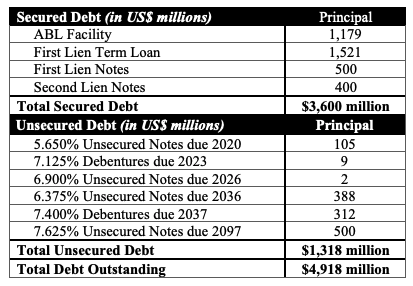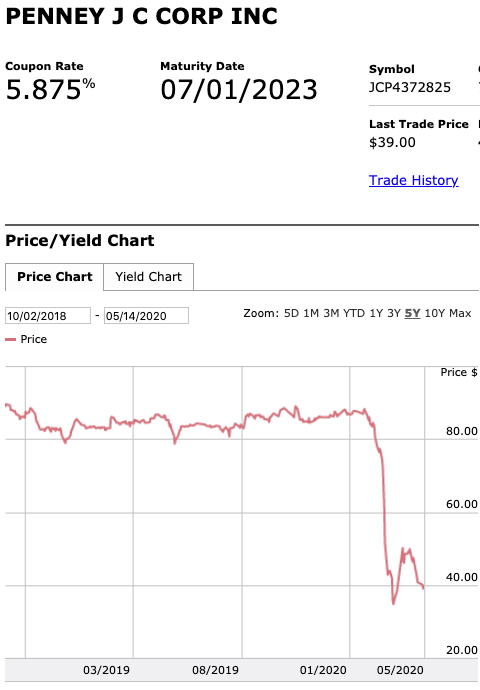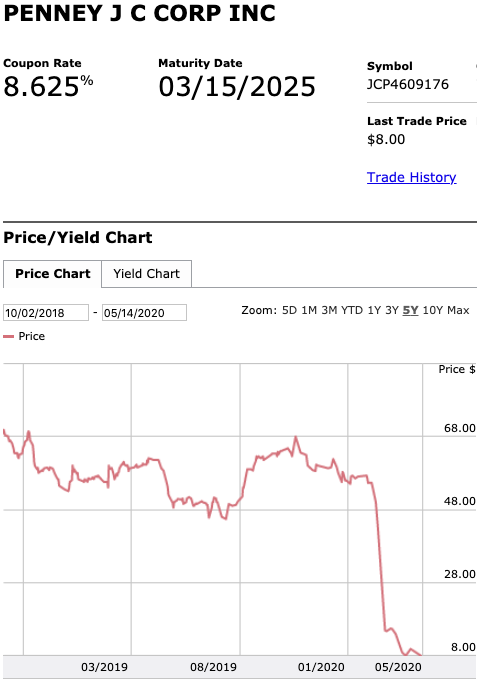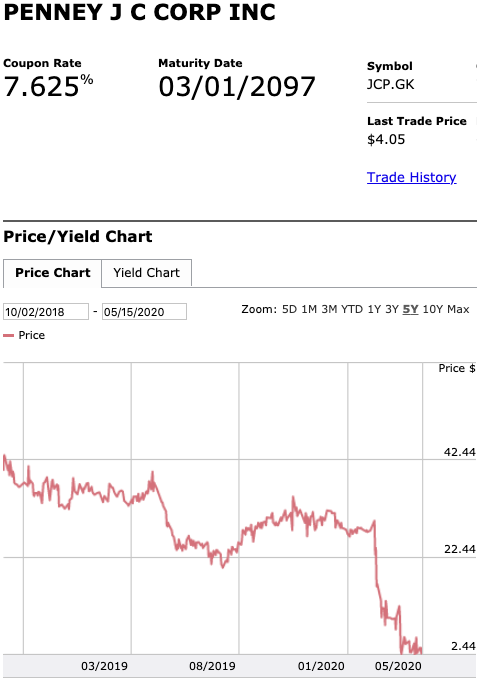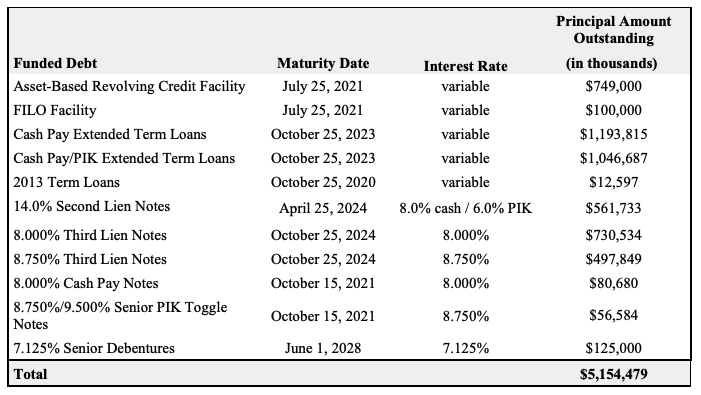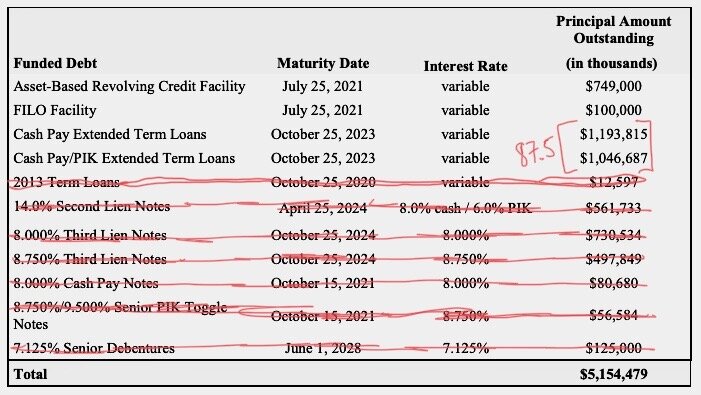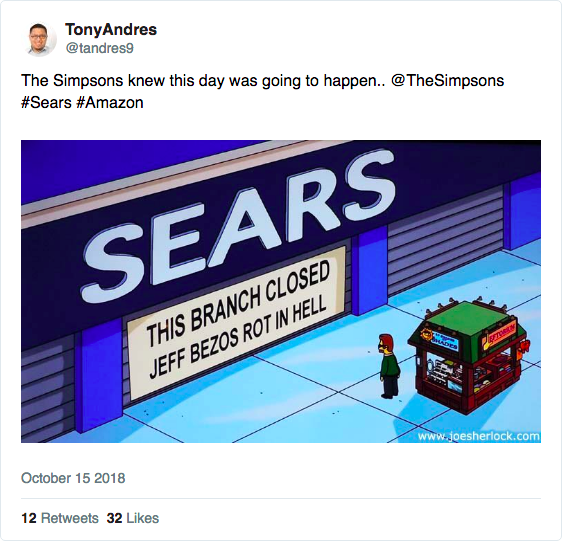May 15, 2020
Let’s be clear about something right off the bat. Encino Man, Captain America and Austin Powers could all suddenly surface from being entombed in ice for decades and even THEY wouldn’t be surprised that Texas-based J.C. Penney Company Inc. (and 17 affiliates, the “debtors”) filed for chapter 11 bankruptcy.
There are a couple of ways to look at this one.
First, there’s the debtors’ way. Not one to squander a solid opportunity, the debtors dive under “COVID Cover”:
“Before the pandemic, the Company had a substantial liquidity cushion, was improving its operations, and was proactively engaging with creditors to deleverage its capital structure and extend its debt maturities to build a healthier balance sheet. Unfortunately, that progress was wiped out with the onset of COVID-19. And now, the Company is unable to maintain its upward trajectory through its “Plan for Renewal.” Moreover, following the temporary shutdown of its 846 brick-and-mortar stores, the Company is unable to responsibly pay the upcoming debt service on its over-burdened capital structure.”
The debtors note that since Jill Soltau became CEO on October 2, 2018, the debtors have been off to the races with their “Plan for Renewal” strategy. This strategy was focused on getting back to JCP’s fundamentals. It emphasized (a) offering compelling merchandise, (b) delivering an engaging experience, (c) driving traffic online and to stores (including providing buy online, pickup in store or curbside pickup — the latest in retail technology that literally everyone is doing), (d) fueling growth, and (e) developing a results-minded culture. The debtors are quick to point out that all of this smoky verbiage is leading to “meaningful progress” — something they define as “…having just achieved comparable store sales improvement in six of eight merchandise divisions in the second half of 2019 over the first half, and successfully meeting or exceeding guidance on all key financial objectives for the 2019 fiscal year.” The debtors further highlight:
The five financial objectives were: (a) Comparable stores sales were expected to be down between 7-8% (stores sales were down 7.7%); (b) adjusted comparable store sales, which excludes the impact of the Company’s exit from major appliances and in-store furniture categories were expected to be down in a range of 5-6% (adjusted comparable store sales down 5.6%); (c) cost of goods sold, as a rate of net sales was expected to decrease 150-200 basis points (decreased approximately 210 basis points over prior year, which resulted in improved gross margin); (d) adjusted EBITDA was $583 million (a 2.6% improvement over prior year); and (e) free cash flow for fiscal year 2019 was $145 million, beating the target of positive.
Not exactly the highest bar in certain respects but, sure, progress nonetheless we suppose. The debtors point out, on multiple occasions, that prior to COVID-19, its “…projections showed sufficient liquidity to maintain operations without any restructuring transaction.” Maintain being the operative word. Everyone knows the company is in the midst of a slow death.
To prolong life, the focus has been on and remains on high-margin goods (which explains the company getting out of low-margin furniture and appliances and a renewed focus on private label), reducing inventory, and developing a new look for JCP’s stores which, interestingly, appears to focus on the “experiential” element that everyone has ballyhooed over the last several years which is now, in a COVID world, somewhat tenuous.
Which gets us to the way the market has looked at this. The numbers paint an ugly picture. Total revenues went from $12.87b in fiscal year ‘18 to $12b in ‘19. Gross margin also declined from 36% to 34%. In the LTM as of 2/1/20 (pre-COVID), revenue was looking like $11.1b. Curious. But, yeah, sure COGs decreased as has SG&A. People still aren’t walking through the doors and buying sh*t though. A fact reflected by the stock price which has done nothing aside from slowly slide downward since new management onboarded:



